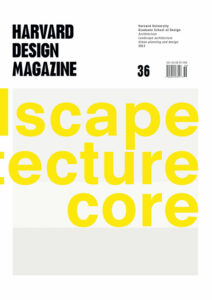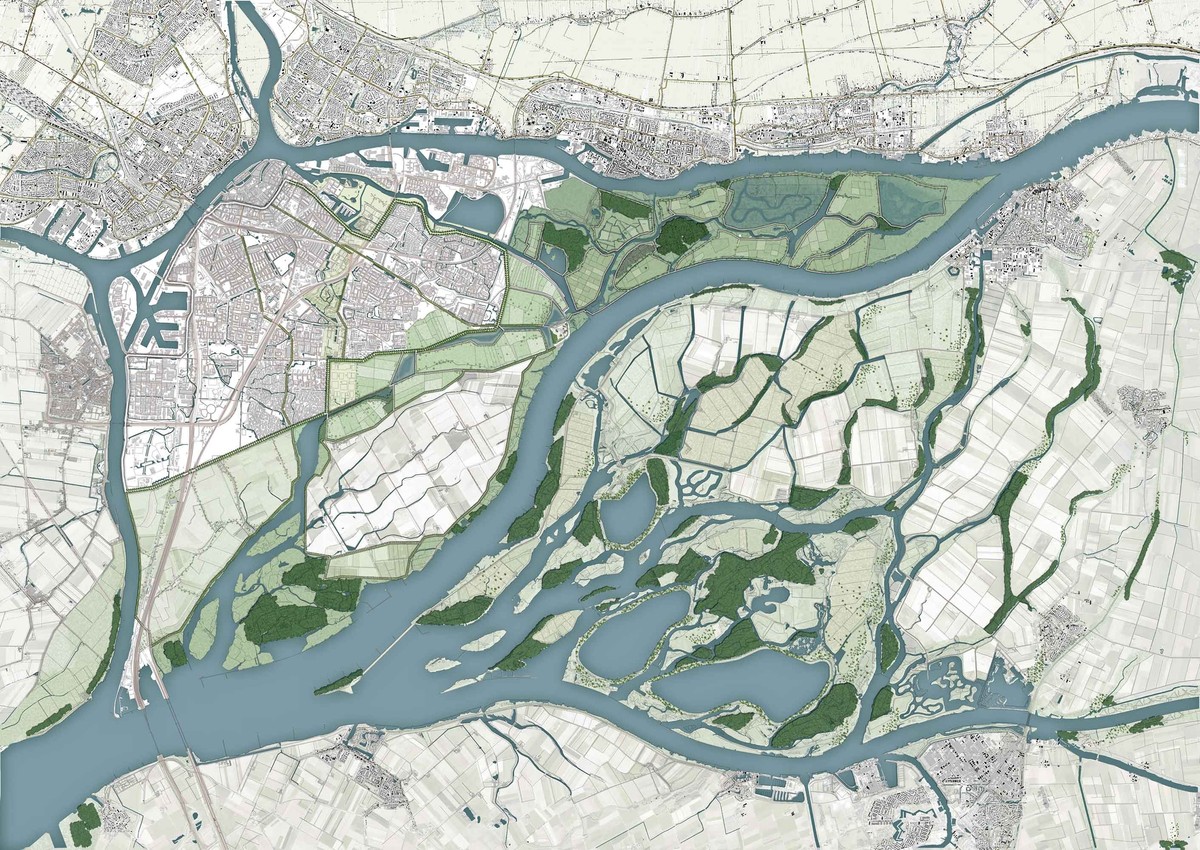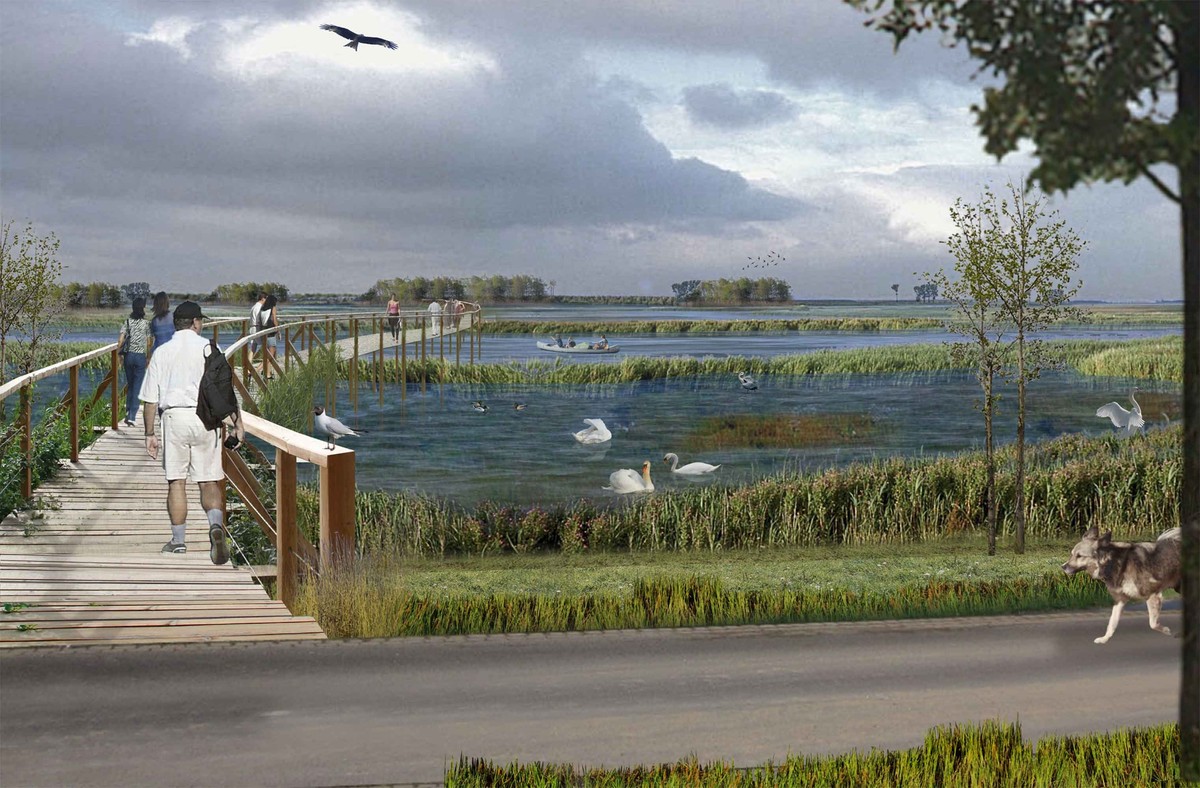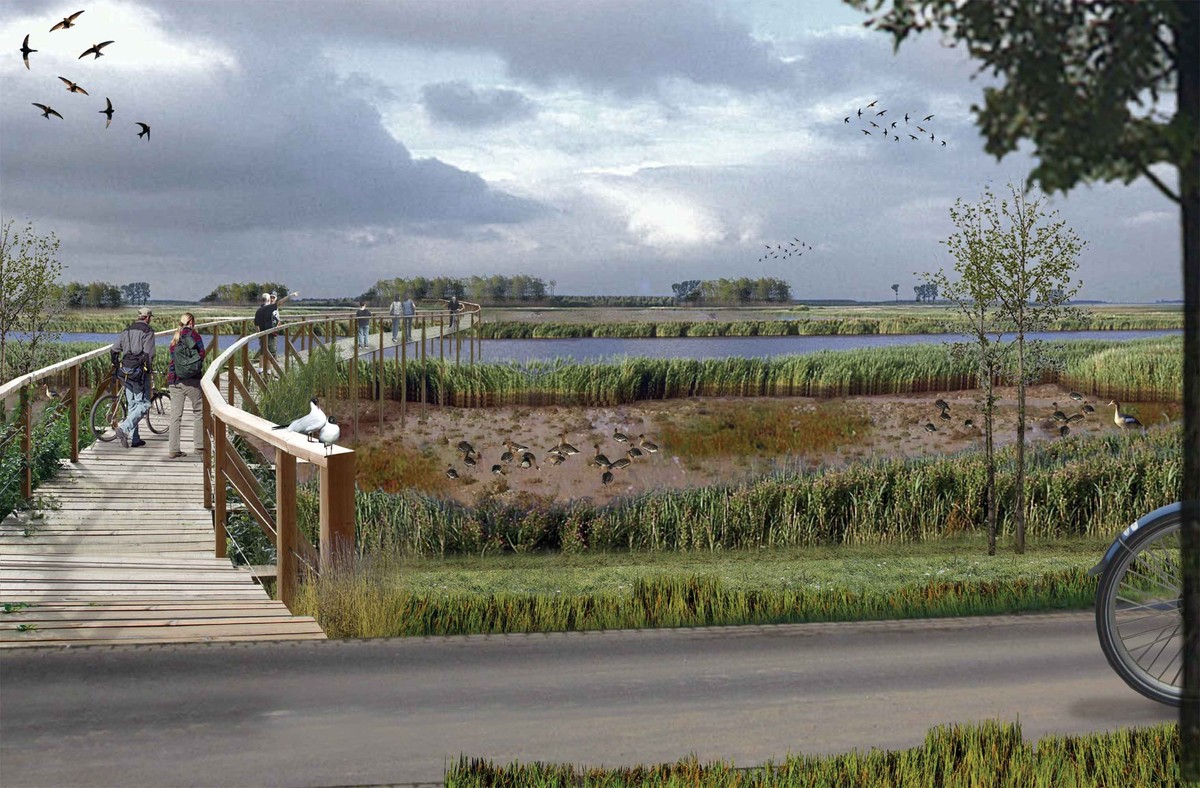Immanent Landscape
Uncertainty is a state that generates an oscillation of emotions between fear and hope. This fluctuation of sentiment impacts our definition of landscape and our understanding of nature, fostering strong reversals of position and even intolerance. To pose the question “where does landscape end and landscape architecture begin?” without sufficient grounding and explanation, reflects no doubt the vacillations of our times, prompting distortions that are characteristic of great uncertainty. The situation calls for articulation and determination; from the onset landscape should be considered as a sedentary cultural construct. The derivatives of nature produced by it have always been unstable and changing. Landscape, just like morality, has been continually transformed throughout the ages, and shifting interpretations of nature have always been the subject of strong societal concerns. Landscape architecture can in this respect be understood as one of the fundamental motors of a society, in a world in perpetual transformation, each epoch mirrors the existential expression of evolving cultural practices on the land.
The word landscape finds its roots in the Old Dutch word landskip, which designates a stretch of cultivated land.1 The word paysage in French stems from the Latin word pagus, which simply means an extent of land made by the peasant.2 In other words, landscape is the belabored making of the peasant, and has nothing to do with the ideal of untouched wilderness. This plain definition of the word helps us better frame the potential field of action for landscape architecture with respect to a long tradition of form giving on the land, and is essentially about bringing new symbolic expressions of nature back into focus in this age of uncertainty.
Contemporary attitudes toward a rapidly dwindling nature have never been so murky, not to say apologetic. Nor has this foiled any kind of urban expansion or planetary destruction whatsoever. It prevails in our conversations as a form of wishful thinking replete with the best of moral intentions. It is my belief that we have reached a point of intellectual no return in landscape theory, one where uncertainty about nature has become the main characteristic of our times. The key to solving this uncertainty resides less in a discourse on the materiality of nature to be saved hypothetically by mankind, than in the deeper and more immediate question of the attitude we embody toward it on a day-to -day basis, call this immanence if you will. We must in all lucidity respond to this subjective challenge. We must develop a concept of landscape that is truly immanent; where the seven billion individuals we now represent would strive to establish a stronger bond with nature, albeit symbolic, rather than a persistently grinding opposition toward it.
Immanent landscape is not merely an intellectual construct, it is also about inherent respect for and a capacity to fully live out the moment of a place, in all its moral, physical, and spiritual substance. Immanence is both about a conscious engagement with our environment and the necessity to establish coherence and a meaningful symbolic bond that can lead to new forms of nature and new fields of human action. Immanence is first and foremost about the recognition of beauty in landscape; it engages us in the actual, sentient, and spiritual dimensions of existential necessity. Immanent landscape is about recognizing the aesthetic premise and primacy of any given situation. To make a landscape immanent through marked qualitative differences means to strive for deeper wonder and meaning in the habitual.3 We should promote reduced forms of nature, as in the locus ameonus,4 that can espouse symbolic expressions of culture, life, and hope. Immanence is about bringing the question of beauty and wellbeing to the forefront of everyday societal concerns, reaping the benefits of a genuine sense of nature in each and every place.
We are living in intellectually troubled times for landscape architecture. Part of the reason for the awkwardness in the present debate is not only due to imminent environmental degradation, but also to the rapid degeneration of our own symbolic understanding of nature. We are the receptacles of models of thinking inherited from our forefathers, and when it comes to nature, these models seriously hamper our actual perception of things. What we find out there has little to do with much of the idealized landscape preconceptions we carry. Older landscape models work effectively, only as ideals, with a deeply warped reception and conception of nature, which in turn, has measurable repercussions on the way we act upon the world. It is my belief that we should start to investigate possible options for a renewed relationship with nature that could also foster a new kind of landscape architecture, defending stronger cultural values of beauty and harmony. Only then will the immanence of landscape become a tangible reality again.
Stepping aside from conventional wisdom, one finds a disturbing similarity between two seemingly distinct ideologies that have successively left an important mark on contemporary society: historic materialism inherited from Marxism and scientific materialism promoted by ecology. Marxism, brandished the core condition of a “lumpen proletariat”5 and its alienation as pretext for societal change, whereas ecology brandished the core condition of a “lumpen nature”6 and its further degradation as a prompting for ecological change. There seems to be a seamless transfer between the concept of historic materialism inherited from Marxism and the concept of scientific materialism postulated by ecology.
Although these ideologies are poised as being materially objective, they both refer to social and environmental utopias that are quite simply untenable. Their arguments support a subject-object relationship, seen as a commodity, where the maintenance of an environment’s physical properties devoid of any sentiment becomes the primary condition of existence. This leads to the bare expression of minimal subsistence and human alienation in the case of Marxism and a reference to minimal survival of endangered environments in the case of ecology. Questions about the emotional qualities, the beauty and sentiment produced by landscapes are never considered in such models. The externalization of “natural suffering” in ecology, just like the exteriorization of “human suffering” in Marxism, have failed to bring about the realization of any amelioration that could recover a lasting bond in either nature or society.
We are all mortals, living in a world of mortals and our relationship toward nature is a meaningful matter, just as our relationship toward human communities. It is not by fostering moral guilt about some “lumpen proletariat” or some “lumpen nature” that the fundamental ontology of life on earth will change. Acknowledging this fact is indeed quite painful for those who have defended these values over the past century. We must now reach beyond the blind dogmatism of such “benevolent” ideologies, and talk more concretely and actively about the immanence of landscape, a landscape capable of engendering a form of natural urbanity with human spirit, comfort, and sentiment at its center. A moralist reference to a “lumpen proletariat” never created the basis for a more humane society, and I have reason to doubt that the present moralist stand on some “lumpen nature” will ever contribute toward a more sustainable world. With the advent of urban growth, conventional wisdom today tells us that landscapes are rapidly disappearing from our world and that something must be urgently done to circumscribe this threat like an ideal Ebenezer Howard diagram that would encapsulate what little of the countryside remains in our present urbanity. Such an attitude toward landscape is a form of teleological naturalism7 replete with objective finality, where man is believed to make the world more comprehensible in its totality through a greater natural system that we can call landscape.8 It helps justify human existence both as rational and as part of nature, and postulates a mechanistic purpose in the world in which nature itself directs man towards better civilization, morality, and culture.
What we need to address is a new symbolic order of nature in our cities, one that is immanently meaningful. I take a position against the ecological ideal of a perfect nature kept in splendid isolation, a nature imagined as something existing prior to any human agency, and defended at present by various forms of radical environmentalism. The notion that landscape can exist as a form of original wilderness completely detached from the reality of the contemporary city has been poison to our profession. Rather, I would postulate that the immanent landscape can become a key factor of urban change. I believe in a renewed ontology of nature, as contradictory as it may seem, where the substrate of urban history and human subjectivity would symbolically embrace landscape in a congruent symbolic whole. In this instance, landscape and landscape architecture would no longer be in opposition, nor construed solely by scientific ecological criteria, but actually become part of multiple human cultures and destinies.
Instead of having landscape defend the waning ideal of some untouched virginal wilderness prone to relentless human aggressions, I propose a paradigm reversal, where nature would simply become an integral part and expression of the topology of the contemporary city.9 This new art of landscape would be changed, adapted and shaped by the human race into a lasting whole, acquiring deeper form and symbolic congruence as the result of its travails, call this cultural differentiation if you will. I consider the massive implementation of this form of immanence as a top priority in society, and new disciplinary knowledge gained though tools of topology will enable landscape architecture to better structure, nurture, and develop a lasting sense of naturalized urbanity, beauty, and balance. This should not translate, however, into an indiscriminate packing of trees and greens around our cities, as if to pay a tribute for all our sins. This, all too often, is the terrible misunderstanding our discipline suffers from, where quantities of green without motive are substituted for any sort of recognizable aesthetic quality. We also need to nurture our need for a contemporary myth of nature by acting consciously with a better understanding of the symbolic implications between man and his natural constructs. This sounds daunting, and the efforts required are indeed tremendous, for they will engage the reality of the contemporary city in all its political, cultural, and topological complexity. I am convinced that immanent landscapes will help open a new age of urbanity and foster the deployment of more meaningful and lasting projects in landscape architecture.
A beautiful example of such urbanity is the new river-scape area at Letten in Zurich. What used to be the site of the most dejected drug scene, has gradually transformed into a delightful urban landscape setting. The success of this riverfront resides less in its minimal design line, than in the overall human quality it emanates. The quality begins with its waters that surge out of a pristine urban lake. The magic here is not so much in the intricate ecology of the place, than in the extraordinary human scene that has thrived around this stretch of water. It is a place to see, meet, swim, love, and relax; a locus aemonius where one can grasp a fleeting moment of immanent harmony with nature, albeit along an old canal on the remains of some disused railway line.
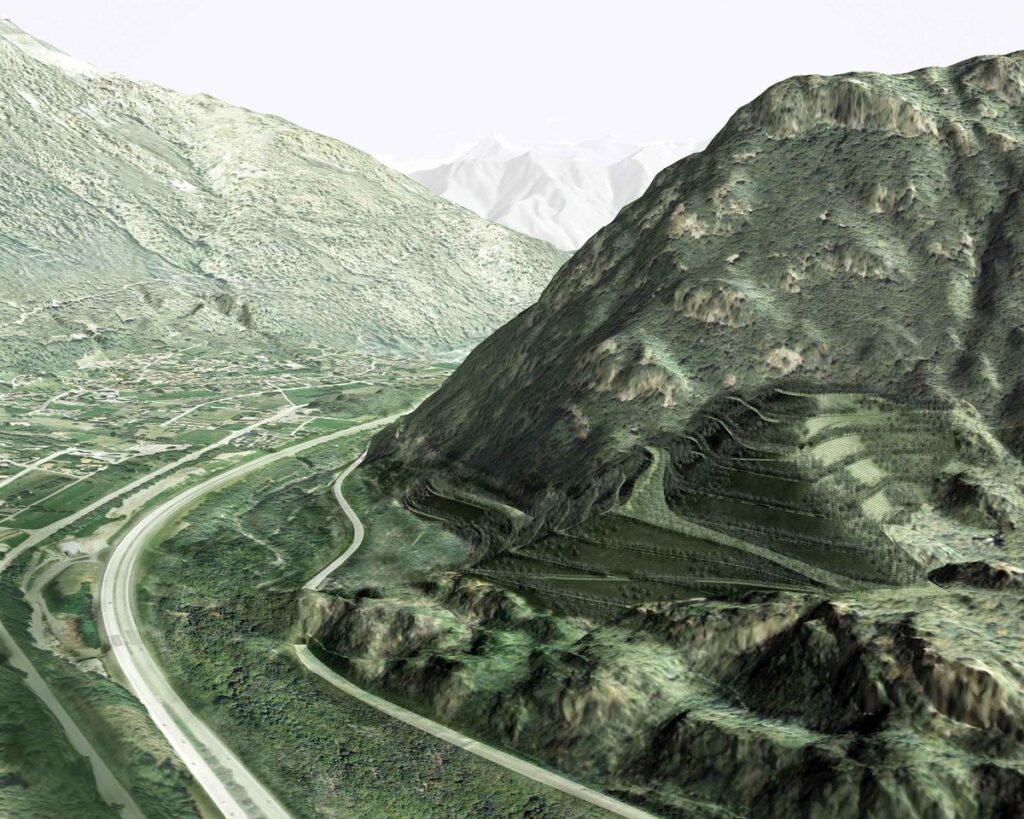
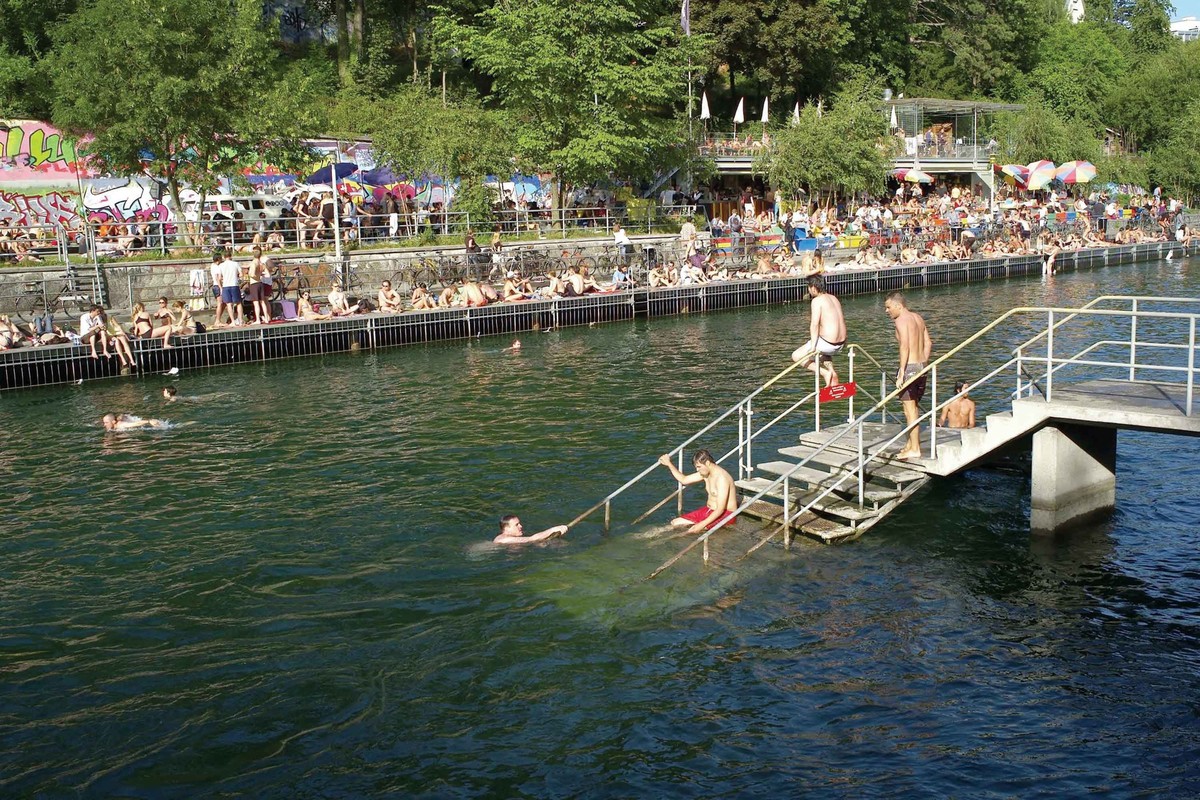
Other examples as far away as Korea point in the same general direction. The Cheonggyecheon River Park in Seoul designed over the last ten years is a strong example of an immanent landscape. It shows how political will can transform the spirit of an entire city lastingly and for the better. Every spring, people and birds flock up this seven km long urban stream that less than a decade before was topped by a six-lane elevated freeway and concrete slab. Now joyful chirps and songs mingle with the sound of running water and laughing children and the scent of cherry blossoms now fill the air against the background rumble of the city. People flock to this new urban stream every day; landscape architecture has achieved here an immanence that was unimaginable a decade ago. Despite critiques about the project’s lack of ecology, and poor design, the present stream is a veritable gift to the city and a resounding success with thousands of visitors each day. Restoring this degraded urban artery into a haven of peace, quiet, and symbolic nature was just beyond the wildest of dreams.
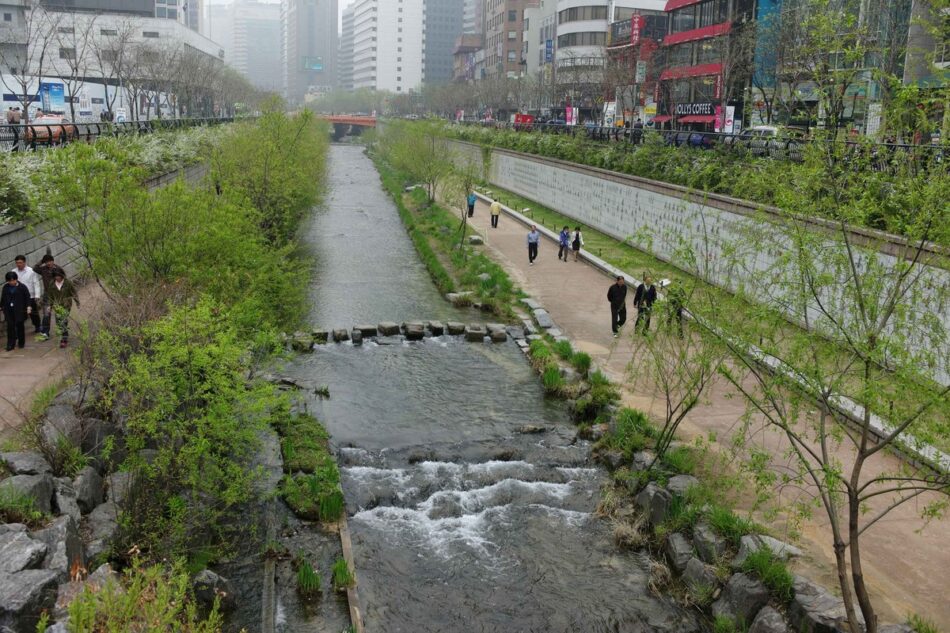
To advance in a new topology of landscape we have to bring landscape architecture, architecture, engineering, and urban design more in balance with each other. Landscape architecture should simultaneously embrace economic, aesthetic, and environmental values within a single societal goal. It should foster a better and more complete understanding of nature that is in tune not only with ecological values, but also with higher spiritual values of immanence specific to each culture.
A change of thinking must happen as much at the conceptual level as at the operative level. Ecology can find its niche in the city, but it will never supersede the symbolic strength of a landscape that is aesthetically pleasing to the soul. This is a plea for a return to fundamental notions of landscape beauty in case anyone can recall what this actually means. Landscape architecture should become the prime driver of such natural immanence creating tangible value throughout the contemporary city. One can draw from numerous examples of the past, when cities still had the courage to define their branding around an all-encompassing vision of landscape. Examples such as the Berlin of Lenné, the Manhattan of Olmsted, the Paris of Alphand, the London of Nash, the Barcelona of Cerdà or the Buenos Aires of Thays, to mention but a few, show how fundamental choices in urban landscape architecture were taken and have prevailed successfully to this day. They made spacious and meaningful landscapes, deploying a vocabulary of promenades, parks, and alleys adapted to a particular city and culture.
The inchoate muddle of contemporary cities no longer offers such clear-cut answers to the question of landscape integration. The lack of a generous urban landscape vision in the late 20th century is probably the single biggest blunder of our planning forefathers. The implications of such failings are multiple, not the least of which was an effective distancing of nature from the city. During that time landscape models about nature shifted from an idealized form of urban nature toward a stronger emphasis on ecology and natural conservation. Ironically, the shift of the natural ideal away from urban space further contributed to the segregation between nature and city. Ecology was never intended to deliver any solutions about societal models, let alone entire cities. But the fact is, that scientific ecology rapidly progressed in decision-making circles and came to weigh-down on the emphasis given to landscape aesthetics in general. It led to a separation of the natural and urban into two distinct orders. But the separatist conservationist model of landscape that ensued, what I have called “lumpen nature,” actually encouraged all kinds of abusive urban developments to occur right beside it. As a consequence, since the formal presence of nature in the city was no longer a requirement in the age of ecology, the modern city developed independently from any obligation to landscape. Landscape architecture fell into the noose set between two irreconcilable ideas of city and nature. The result is that modern cities and their peripheries became entangled in an unbelievable maze of functionalist infrastructures and subdivisions with no relation whatsoever to any landscape framework.
The elevated Cheonggyecheon motorway in Seoul is a perfect emblem of such profound functionalist disorders. The ideal of nature conservation and the rugged pragmatism of urban expansion understood as being in constant opposition, are actually intimately bound. They have fed vicariously off of each other in the last decades, and the great losers in this separation, apart from landscape architects, are actually the children of our cities that have grown up thinking that nature always belonged elsewhere. Landscape architecture will only reverse this separatist trend if it brings with immanence a strong and meaningful ideal of nature back to the heart of the city.
The surgical re-introduction of landscape structures in the existing city fabric will now cost one hundred times more than if they had been planned from the onset. The Cheonggyecheon river project cost Seoul almost one billion dollars. It may not be clear whether such landscape surgery will ever bring a return on investment, but there is no shadow of a doubt that it brings lasting value to a neighborhood. Look at the effects of the Highline on real estate values in lower Manhattan. Because of scarcity, there exists an unquenchable, almost irrational de facto thirst for nature in cities. People are more than ready to support such landscape architectural endeavours with great expectations, in full knowledge of their collateral benefits for amenities, comfort, ecology, culture, and local real estate markets. Call this a kind of branding by landscape.
In order for cities to remain competitive, natural reinsertion through major landscape architectural projects will become a generalized trend around the world. If nations were prepared to dedicate a small thousandth of their GDP to their making, it would make a huge difference to the scale and scope of possible operations. Not only would such projects improve the quality and value of a city, but they would offer a lasting landscape framework for generations to come. Landscape architecture will become the ultimate urban luxury of the 21st century. This is an undeniable fact. The profession will need to prepare for this endeavour with the proper approaches, methods, and tools. This will not only require strong political will and parity from public and private investment, but will also foster the invention and deployment of a dynamic topology of nature, better adapted to urban constraints. Immanent landscape will become part of our daily life, adding strong sentiment and spirit to each and every place.
When Alphand proposed his idyllic park at the Parc Des Buttes-Chaumont in 19th-century Paris, it was planned on a disused gypsum quarry stigmatized by gallows, surrounded by smoke belching factories and squalid working class tenements. To realize this proposal, he transferred a picturesque vision of landscape with well-established aesthetic conventions to a rather dismal stretch of land at the periphery of Paris. The same can be said of Olmsted who cleared some dreary shantytowns in midtown Manhattan to make way for Central Park. The question is whether the well-established landscape models of our forefathers can be replicated today or if we need to define different ones? The multitude of images and the uncertainty on a poetic discourse of nature in today’s context leaves me sceptical. It is precisely the absence of effective models in landscape architecture capable of operating at the contemporary urban scale of complexity that may explain why so little work of comparable scope and value has been achieved in recent years. The task ahead is immense. It calls for a differentiated understanding of what is actually meaningful and culturally appropriate in each case.
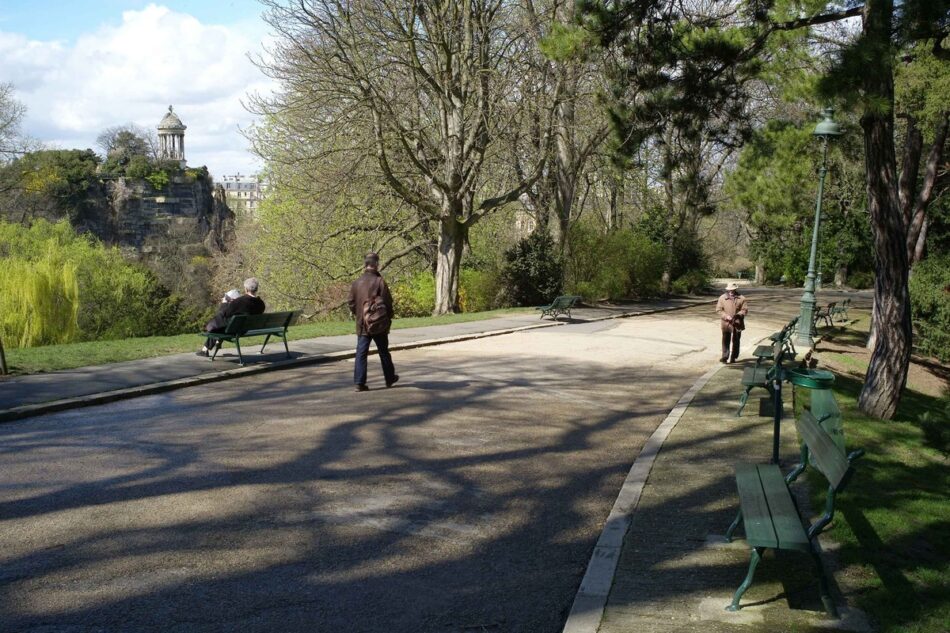
The Sigirino project by the Alptransit tunnel company in Switzerland is an interesting case in point. My office was challenged with the question of defining a massive artificial landscape on a very sensitive site. Work on the mound representing almost four million cubic meters of excavation material, revealed the inherent complexity of the process, where all parties involved, whether engineers, environmentalist, architects or landscape architects, had to agree about a definite artificiality of nature. The mound, designed as human artifact peaking at 150 meters above the valley floor, could not be ignored in the Veddegio valley of Ticino, and it is precisely the question of the meaning of such a piece of landscape artifice in this urbanized valley that was at the heart of decisive discussions. The result was the integration of various ecological requirements within the broader landscape context of this unprecedented piece of natural artifice engaging entirely new aesthetic considerations.
The task for landscape architects is immense, but not implausible. With the exponential population growth we are witnessing, societal ideals about nature need necessarily to adapt and change. Each green patch, each stream, each tree in this urban conglomeration will become increasingly valuable. We need to reach another level of invention, one that is to convey more meaning to the city dweller. In this perspective, landscape architecture must react to current urban conditions and embrace the situation with no a priori. The “lumpen nature” that has gone astray in the periphery should be brought back to the city to fuse together with the “lumpen urbanites” to create a more heterogeneous yet congruent whole. Immanent landscape will be understood as the embodiment of varied cultural aspects and relationships that a city can yield in this new age of nature. This requires creative design methods capable of combining contemporary resources in physical modelling and data technologies accurately, with a culturally engaged design approach capable of distinction and differentiation. At the ETH, we prepare architecture students to tackle the complex relationships between landscape, landscape architecture, and architecture and urban design in several steps. First, we bring a cultural and theoretical dimension of knowledge-based design to students so that they gain an understanding of landscape as a physical and cultural body in dialogue with architecture and cities throughout history. Second, our studio courses train the students in a palette of advanced tools of topology that challenge established design skills with projects at various combinations of scales and complexity.10 Third, we introduce concrete situations to negotiate with key actors such as the core of engineers, local and regional politicians, investors, contractors, and private interests to better define and circumscribe the exact topology to engage in.
The present economic crisis has put dramatic societal issues in the limelight, and significantly marginalized the climate conscious faith in ecology that flourished over the last decade under the banner of sustainability. The outcome of the recent Climate Conferences in Rio de Janeiro and Durban only confirm this pitiful demise. But, before succumbing to a more generalized form of environmental fatalism, shouldn’t we ask ourselves the question differently? Can landscape architecture not make a difference by reconciling ecology with more significant cultural and societal concerns? Efforts to make major “natural transplants” into cities have started to happen, not the least of which in China, where dealing with environmental issues has become a top national priority. China has chosen to promote large-scale landscape architecture both academically and professionally.
Landscape architects in China earn 1.5% higher honorariums than architects and urban designers because the big landscape architectural offices with up to 500 employees are in charge of making entire landscape systems work at the scale of a district. This includes site planning, building, and infrastructure as well as the design of natural environments. Cities like Tianjin and Shanghai have been at the forefront of pioneer projects in river water restoration and now serve as exemplars for the rest of the country. The Houtan River Park in Shanghai designed by Turenscape, is a delicately designed stretch of urban wetland Park running for several kilometers between the Gungpo River and its floodwall. The park doesn’t act only as an environmental system; it also provides immanence through new landscape amenities for leisure, meditation, and learning. The highly polluted grade 6 or 7 water taken from the river migrates through a set of stepped ponds. It gradually improves in quality over two days to attain a grade 2 or 3 in which people can bathe, fish, and play. The Houtan River Park can be taken as a new allegory of nature, as a return to more balanced origins. It is eminently specific to Chinese culture, and there is indeed some magic to this place where plants are seasonally harvested and incinerated, to get rid of heavy metals and pollutants. The gardens offer pleasant landscape scenery with groves of trees and bamboo and abundant herbaceous flora that attracts a variety of birds, insects, and animals. This project expresses a strong ideal of landscape that is both urban and natural and presents an optimistic vision for the Asian megacities of today. Absolute ecological purity and originality will never be attained here, but this matters less than having the landscape architecture work aesthetically and topologically in strong symbiosis with the surrounding city. In the Houtan River Park, the immanence of landscape can be felt in every step and at each instant.
It is refreshing to see positive landscape transformations coming from China, but they are obviously the result of considerable investments and the use of political force that can at times be morally questionable. But the scale and success of these landscape transformations is simply astounding and should give us food for thought on the possible paths towards radical environmental change in our own Western cities. Could it be that we will yet again have to learn something new about the immanence of landscape from China?
How much can landscape architecture actually contribute to urban wealth and wellbeing in this century? ETH researchers and students at my lab, under my direction, worked on a flood control project on the Rhône River in Sion, in the canton of Valais, Switzerland. The design study showed that a new approach to the landscape topology of the riverbanks and bed could be done in collaboration with the water engineers of the canton. By proposing a new waterfront for Sion, we made possible a much safer urban and landscape environment on the banks of an impetuous river. The outcome of this landscape project helped determine development guidelines for Sion over the coming decades and the city has adopted the idea of a new urban waterfront and landscape where a new river island will become the focal point of the scheme.11 Another example of work done by ETH students and researchers is the Dordrecht landscape project in South Holland. The project shows how a site that will experience maximal environmental constraints under climate change in the coming decades can adapt intelligently to new patterns of landscape topology to cope with the situation. The project shows how the threat of rising waters can actually create advantageous situations where an intelligent use of terrain modelling and hydrological modelling will enable the development of an entirely new kind of desirable landscape urbanity along the Dutch delta.12
Environmental consciousness and civic responsibility work hand-in hand, when both a rational and emotional relationship toward a new form of urban culture can be cast. This is where striving for a culturally meaningful concept of landscape plays a vital role. People cannot deal solely with the drama of climate change, risk management, and environmental statistics to just cope, they need to embrace and become supportive of a changing situation. They also need to believe in a strong vision of change, one that can inspire them and enable them to link a given situation to a much deeper meaningful level. Landscape architecture must create a new value system that is capable of combining the new economics of the city and aesthetics of a domesticated nature all in one.
Bruno Latour warns us that we have allowed the contemporary definition of nature to escape the philosophical realm.13 It has fallen instead in the hands of diligent scientific technocrats, who impose unilaterally their deterministic view on environmental issues. When the question of a balance between nature and the city is at stake, who is answerable for the kind of relationship we actually foresee between an individual, society, and its environment? And who is actually in charge of drawing that environment into a beautiful intelligible whole? Can sustainability actually promote the idea of a new form of nature without first addressing the fundamental question of landscape aesthetics? This is simply not possible, because without a clearly identifiable aesthetic of landscape, there remain multiple notions of sustainability that may be quite distant from individual reason. In this age of multitude and uncertainty, I strongly believe in the immanence of landscape in the wake of urban ecology, not so much as an ultimate solution to the incredible challenges we are facing, but in the hope of remaining open and alert to the idea that landscapes can make cities significantly more meaningful, valuable, and liveable. It is precisely this fabricated yet recognizable form of nature that needs to be crafted into place in all its topological precision. How much space, effort, and time must we actually engage in this endeavour to reconcile a lasting sense of immanence in the landscapes of our cities? For only then will we find both pleasure and purpose in nature’s beauty and faith in the landscapes that we have sown.
